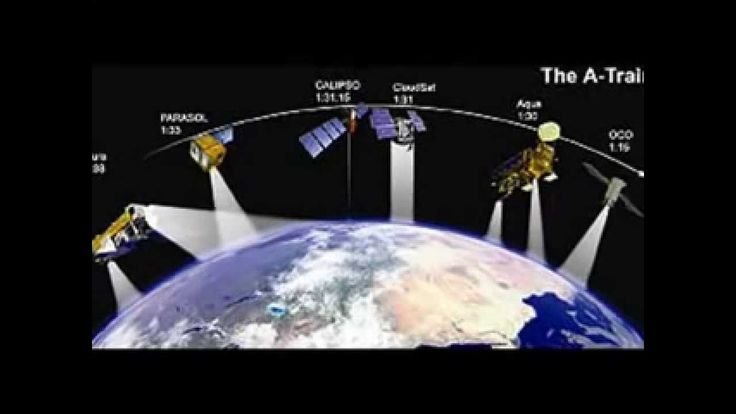Sky Screen, Turning The Sky Into A Giant Projector - Theory Land
Creating the greatest and scariest show on earth. Lets take a walk into theory land and see if its possible.

Awakened Light - LSNT
In a visionary world fueled by the convergence of scientific ingenuity and imaginative exploration, the union of neurointerface integration, advanced materials science, and the ‘barium’ material has ignited a technological revolution. This synergy has birthed a new era of brain-computer communication, where neural pathways merge seamlessly with external interfaces. As scientists unlock the mysteries of neural interaction, the boundaries of perception, cognition, and connection are pushed to extraordinary limits. In this speculative landscape, the human experience is transformed, enabling humanity to perceive, communicate, and collaborate in ways once confined to the realms of dreams and fiction.” Which leaves the question can they really pull off blue beam project.
Sky Screen For Blue Beam Project

Holograms
The sky is made up of air molecules and gases that scatter and absorb light, which makes it difficult to project images onto it in a coherent and visible manner.
However, when looking for creative ways to simulate project blue beam one could consider the following approaches.
- Artificial Sky Structures: Large domes or structures with specialized materials from old, could be designed to simulate a projected sky image. Inside these structures, advanced/ancient projection technology could be used to display images that create the illusion of an altered sky.
- Sky Projection Mapping: Which involves using powerful projectors to project images or videos onto large surfaces, such as buildings or mountains, that are visible from a distance. While not the actual sky, it can create a visually impressive illusion.
- Atmospheric Control: use methods to modify the composition and behavior of the atmosphere to reduce light scattering and absorption. This could involve controlling air molecules, gases, and particles to create a more transparent medium for projecting images. Or one could use Barium, Strontium and Aluminium which would take longer but could possibly when combined with other factors work but it would take time in theory to build up the layers required. You would also need a 2 way receiver to make it personal to the viewer.
The concept of atmospheric control involves the manipulation of the Earth’s atmosphere to achieve specific goals, such as reducing light scattering and absorption, altering weather patterns, or addressing environmental challenges. Light scattering occurs when small particles or molecules in the atmosphere redirect light in different directions, causing the sky to appear blue during the day. Light absorption occurs when molecules and particles absorb specific wavelengths of light, leading to the gradual dimming of light as it passes through the atmosphere. So in theory you coould modify the atmosphere in such a way that it becomes a more transparent medium for projecting images. This could involve engineering the atmosphere to minimize light scattering and absorption, allowing projected images to pass through without significant distortion.
Hypothetically, scientists could explore various methods to modify the atmosphere for this purpose:
Nanoparticles: Use nanoparticles or aerosols into the atmosphere that interact with light in ways that minimize scattering and absorption.
Gaseous Changes: Add specific gases that have properties conducive to reducing light interference, although this could be challenging due to the complex chemistry of the atmosphere. Its still possible in theory land. Also by placing reflective or refractive particles at high altitudes to create a localized “projection zone” where the atmosphere is more suitable for projection. Do you remember when mary appeared in the sky that was “localized”. Its possible this technology combination has been used before.
Laser-Assisted Atmospheric Modification: Advanced laser technology could be used to selectively target and manipulate specific air molecules or particles, temporarily altering their properties to minimize light interference. Still blue beam would need to be more personal that that. A need for it to be on a biological and emotional level also. Nano tech intergration could be used as its currently in a lot of food products and has been rolled out in other ways direct and indirectly. Nano technology is self assemble and can be programmed for anything you require. Nanomaterials that can interact with light in novel ways, potentially enabling the creation of “smart” particles that can be dispersed into the atmosphere to act as projection surfaces.
Blue Beam Project Creating The Sky Screen. Is it possible?

Many ways can lead you to the answer, if its possible.
Global Positioning and Synchronization: A network of advanced satellites or other positioning systems that can accurately track the position and movement of the projected image on the sky. This would ensure that the image remains stable and correctly aligned thoughout the presentation.
Real-time Image Rendering: A supercomputers capable of rendering high-resolution images in real-time. Such as DWave or the singularity, to ensure that the projected image appears correctly from various viewing angles. This is something that you need to take into account also as if they are really going to do this, there can be no errors. Therefore they would have to use quantum communication networks that can transmit information instantaneously over vast distances. This could enable real-time synchronization of projection data across the globe, allowing for a coordinated sky projection.
Volumetric Display Technology: Technology that can create volumetric displays in the air itself, allowing for images to be projected in three-dimensional space without relying on a surface. This could create the illusion of images floating in the sky in theory, as they say we do not have that technology yet.
Biotechnology for Atmospheric Adaptation: Involves using biologically engineered organisms to modify the composition of the atmosphere. In the context of using the sky as a projector, one could use genetically modified plants or microorganisms to release certain compounds into the atmosphere that would enhance visibility and reduce interference with projected light.
For instance, these organisms could release compounds that reduce the scattering of light by air molecules and particles.
Neurointerface Integration: Technology that interfaces directly with the human brain, allowing people to see projected images as if they were real. This could involve neural implants, nano technology or advanced augmented reality systems that blend the projected images seamlessly into people’s perceptions. Neurointerface integration, often referred to as brain-computer interface technology, the aim is to establish direct communication and interaction between the human brain and external devices. Such as computers or other technologies. Creating a seamless connection between the brain’s neural activity and digital systems, enabling bidirectional communication. The neurointerface device would record the brain’s neural activity as the person looks at the projected images in the sky. This activity would include patterns of neural firing associated with processing visual information. This concept would require a deep understanding of neuroscience, neuroengineering, and advanced signal processing techniques.
Direct Connections Sky Screen - Brain Computer Interface

Overview of the progress in BCI research up to 2021
Medical Applications: BCI technology has been successfully used to help people with paralysis or communication impairments regain some level of control over their environment. For example, researchers have developed BCIs that allow individuals to control robotic arms or computer interfaces using their brain signals.
Communication Aids: BCIs have enabled individuals with conditions like amyotrophic lateral sclerosis (ALS) to communicate by typing words on a computer screen using their brain activity.
Neuroprosthetics: BCIs have been used to develop prosthetic limbs that can be controlled by the user’s thoughts, allowing for more natural and intuitive movement.
Neurofeedback and Rehabilitation: BCIs have been explored as tools for neurofeedback and cognitive rehabilitation, helping individuals enhance their focus, relaxation, and cognitive abilities.
Research on Brain Function: BCIs have been used to study brain function and the neural basis of various cognitive processes, providing insights into how the brain works.
This field is still largely in the realm of medical research and development, focusing on applications that aid individuals with disabilities, improve brain health, and enhance cognitive abilities. However, let’s explore how neurointerface integration could potentially intersect with nanotechnology and materials like “barium”. Barium a nanomaterial with unique properties that make it well-suited for interfacing with neural tissue or enhancing brain-computer communication. In this context, “barium” could be designed to interact with neural signals, improve signal transmission, or even act as a substrate for growing neural connections.
sticking on theory land, what about using strontium and illuminum combined with balarium would that be a better condutor when paired with the neurointerface?
combining elements like strontium, aluminum and barium you could design a scenario where the combination of strontium, aluminum, and barium results in a material with specific properties that enhance its suitability for use in neurointerface technology. Strontium and aluminum could be chosen for their electrical conductivity properties, and barium might further amplify or optimize this conductivity when combined. This enhanced conductivity could be advantageous for efficient communication between neural tissue and the external device.
Biocompatibility: The material could be designed to interact favorably with neural tissue, reducing the risk of inflammation, rejection, or adverse immune responses when used as part of a neurointerface implant.
Signal Enhancement: The combined material might have properties that enhance the detection and transmission of neural signals. This could result in clearer and more accurate communication between the brain and the external device such as the projection for the sky screen.
Adaptation and Plasticity: The material could facilitate neural adaptation and plasticity, allowing the brain to more seamlessly integrate with the neurointerface. This could lead to quicker and more intuitive interactions over time if the projevt was to continue a few weeks or months. The combined properties of these elements result in a material that is highly durable and long-lasting, ensuring the stability and reliability of the neurointerface over extended periods.
The combination of strontium, aluminum, and barium creates a unique quantum resonance effect. This effect could enable an incredibly efficient and precise transfer of neural signals to and from the neurointerface. Quantum principles could be harnessed to reduce signal loss and interference, leading to unprecedented clarity in brain-computer communication. In addition to the material itself, you could design bioengineered nanobots that are coated with or incorporate the strontium, aluminum and barium composite. These tiny robots could be introduced into the body and directed toward neural tissue. Once there, they could interact with individual neurons, enhancing their communication capabilities and establishing a direct link between brain cells and the neurointerface. in theory land if we had the ingredients. By integrating the strontium, aluminum and barium materials within the brain, you could technically create holographic representations of projected images directly within the neural pathways. This could allow users to perceive intricate and immersive projected scenes without the need for external displays.
strontium, aluminum, and barium could enable seamless integration of individual neural networks with a global neural cloud. This cloud-based network would act as a collective consciousness, allowing individuals to share thoughts, emotions, and experiences across vast distances. The material’s unique properties might facilitate efficient data exchange between the brain and the cloud. Its worth you looking into the singularity and connecting consciousness also find Ray Kurtzwell.
Blue Beam Project, Project Blue Beam Time Will Tell, If It Can Be Done

In Closing:
In the realm of theory land technological exploration, the concept of atmospheric control for the purpose of optimizing projection quality onto the sky presents an avenue for discussion amoung the truther community. As This theoretical approach envisions manipulating air molecules, gases, and particles to mitigate light scattering and absorption, thereby enhancing the visibility and coherence of projected images. This concept taps into the interdisciplinary fields of atmospheric science, optics, and advanced materials engineering.
That through innovative methods such as particle dispersion, gas composition manipulation, and laser-assisted techniques, it could be conceivable to create localized or global area within the atmosphere that serve as optimal projection zones.
As the boundaries of scientific inquiry are pushed, it is crucial to exercise prudence, engage in rigorous research.
